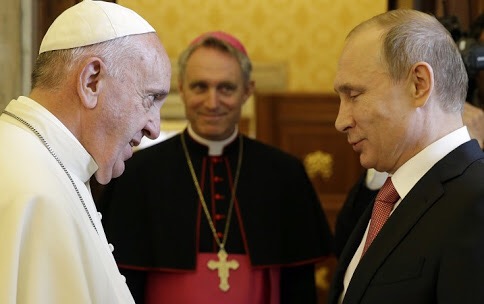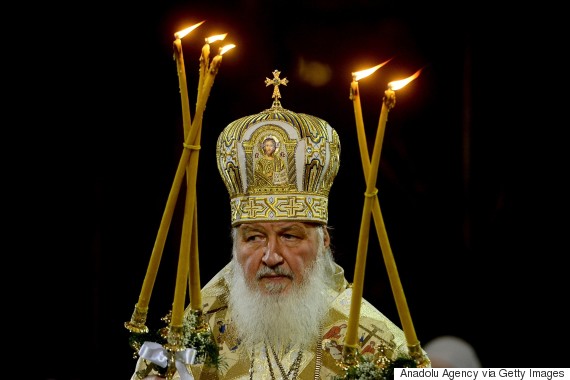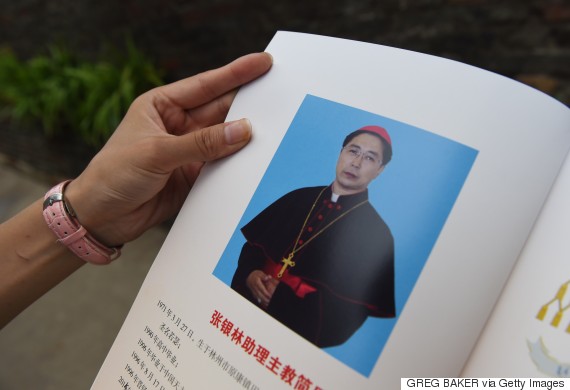
ROME — Pope Francis is about to leave for a five-day trip throughout Mexico. This country is among the most visited by recent popes, especially John Paul II. Francis will reach areas where his predecessors never wandered, ending his journey at Ciudad Juarez along the border with the U.S. Generally for his visits abroad, he seeks both meaningful and unexpected destinations (Albania, the Central African Republic, Sweden next October), and when possible, chooses places that are free of other pontiffs’ footprints.
He has traveled now on all five continents. Yet China and Russia still stand on the far horizon. Out of the 180 or so countries that have diplomatic ties with the Holy See (including countries like Iran and Cuba), amid all the heads of government and ministers and politicians and dignitaries who journey from far and wide to the Vatican, Beijing and Moscow remain two forbidden places for the head of the Catholic Church.
For now.
A Tropical Encounter?
Could Jorge Bergoglio unlock the door? From sources close to the Vatican and prelates of the curia who do not wish to be named, I have heard some recent positive attempts to craft an encounter between the pope and the head of the Russian Orthodox Church, Patriarch Kirill of Moscow, possibly this year. There is — or there was? — the suggestion that both leaders could meet this month in Cuba, when Francis flies back from Mexico and where Kirill will be at the same time on a visit. The project got leaked to a blog, Chiesa Espresso, but was immediately denied by Moscow’s patriarch. Anyhow, should the meeting not happen in Cuba, it could take place elsewhere — Armenia, for instance, a country close to Russia that the pope is supposed to visit later this year.
Wherever it happened, such an encounter would be historic. Under John Paul II, Russia never considered it seriously. The Polish pope was regarded as making his Church too close with former Soviet territories where the Russian Orthodox Church was experiencing a rebirth. Relations warmed up with Benedict XVI. And more recently, the war in Ukraine, involving and dividing the various Christian churches, has since put aside thoughts of an encounter.

But Moscow seems to appreciate the way the Holy See has expressed a balanced view on what the pope defined, just a year ago, a “war among Christians,” rather than Russian aggression against its neighbor. Francis has always kept dialogue open with President Vladimir Putin, who paid two visits to the Vatican (and arrived quite late). The Holy See understands it needs Russia’s attention on the fate of the persecuted Christians in the Middle East. It also knows that however deep and historic its links are today with the Patriarch of Constantinople, the most powerful church in the Orthodox cosmos is, by far, Russia’s.
From the Kremlin’s point of view, showing closeness with the Vatican is a way not to remain too isolated on the world stage. As for the Russian Patriarch, the Catholic Church is a needed partner in order to safeguard traditional Christian values in Europe.
New Year’s Greetings to President Xi
Relations with China have not reached that point at all. But Pope Francis is doing whatever it takes to patiently undo the knot. In what seems a real communication strategy, he granted an interview to the Hong Kong-based news website, Asia Times. It was published on Feb. 2, before the Chinese New Year. Showing “great respect” for the Chinese people and admiration for the country’s “great richness of culture and wisdom,” Francis also expressed his “best wishes and greetings” to Chinese President Xi Jinping.
This comes after other signals sent by the Vatican towards Beijing. In summer 2014, Francis was the first pope ever to be granted access to fly over China on his way towards Korea. As he declared to the press on the return flight: “Do I want to go to China? Of course: tomorrow! Oh, yes.”
The latest interview was recorded in the Vatican on Jan. 28, a week during which a Chinese delegation was said to be visiting the Holy See over two days to negotiate a compromise on a procedure for the pope to name bishops in China. Beijing has never wanted Chinese bishops to pay allegiance to a foreign state. But the Church has never tolerated its local shepherds to be dependent on any political power. In China, Catholics either belong to an official, “patriotic” Church or risk themselves to an underground one.

According to a recent article in the Corriere della Sera, under a deal just reached between the two sides, Beijing would accept the pope to name bishops but only those drawn from a list of names drawn up by the government-supported Church. They would thus be implicitly recognized by the Vatican. Some nominations could even happen soon.
Yet the deal does not mean China and the Holy See are set to have diplomatic ties. That is the next stage. “Catholic” means “universal” and, for the Church, having a black hole as large as China is unsustainable for its very mission. But, on the other hand, to get China’s regime to fully open its doors to the Catholic Church at this moment remains a goal unfulfilled.
This article was prepared by Sébastien Maillard, Vatican correspondent for La Croix, Rome. Read the original “Following Francis” blog post via The World Post, here.
More Stories
PANDEMIC UPDATE: ISRAEL, THE CHURCH OF JESUS!
The Mark of The Beast
Pope prepares for Mark of the Beast with consideration of ‘universal basic wage’